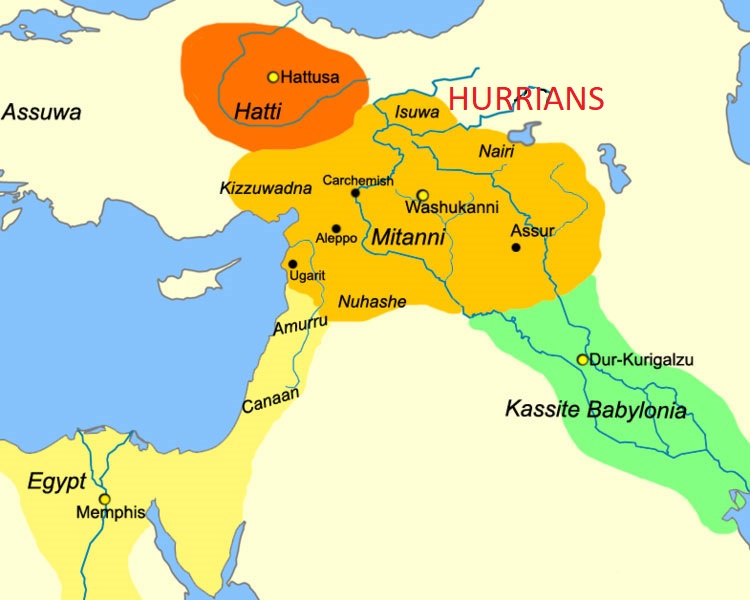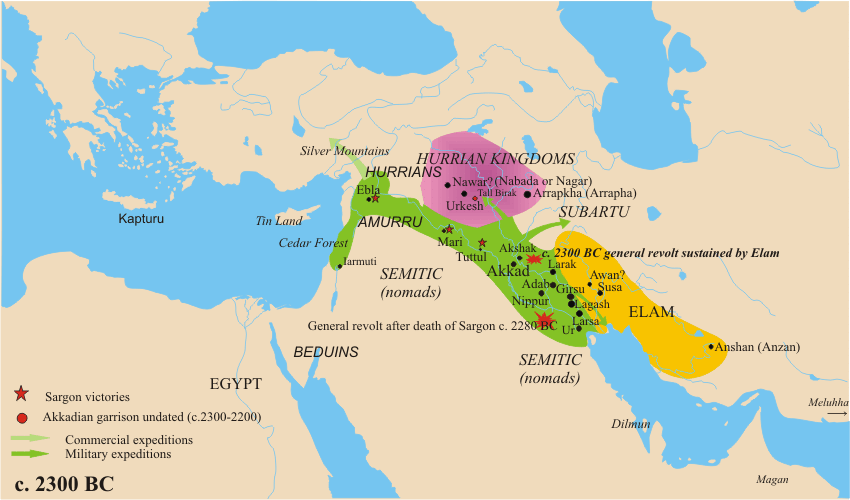OtherSheep
<--@ Titangel
Where is Ur of the Chaldees? Was Woolley right, or Gordon?
Abraham and the Merchants of Ura : Cyrus Gordon : Free Download, Borrow, and Streaming : Internet Archive
Or neither?
Where is the land of the Chaldeans, according to the monuments?
"Instead of "Vannic," it has been proposed to call the language "Khaldian." The chief god of the people who spoke the language was Khaldis, and in the inscriptions we find the people themselves described as "the children of Khaldis." Derivatives from the name are found employed in a geographical sense northward of the region to which the inscriptions belong. Thus the Khaldi "in the neighbourhood of Colchis" are said to have been also called Khaldad; "Khaldees" are frequently referred to by Armenian writers as living between Trapezont and Batum, and a Turkish inscription at Sumela shows that as late as the beginning of the fifteenth century Lazistan was still known as Khaldia."
The archaeology of the cuneiform inscriptions : Archibald Henry Sayce : Free Download, Borrow, and Streaming : Internet Archive
Isaiah 23:13-15 "Behold the land of the Chaldeans; this people was not, [till] the Assyrian founded it for them that dwell in the wilderness: they set up the towers thereof, they raised up the palaces thereof; [and] he brought it to ruin.
Howl, ye ships of Tarshish: for your strength is laid waste.
And it shall come to pass in that day, that Tyre shall be forgotten seventy years, according to the days of one king: after the end of seventy years shall Tyre sing as an harlot."
Strong's Hebrew Bible Dictionary - Bible Software by johnhurt.com
Are there two 70-year prophecies?
Temple of Khaldis, at Muzazir, Pillaged by the Assyrians (in snake-hats)
History of Egypt, Chaldea, Syria, Babylonia and Assyria : Maspero, G. (Gaston), 1846-1916 : Free Download, Borrow, and Streaming : Internet Archive
But the 8-spoked wheels of the chariots and the round shields belonged to the Celts, according to Ridgeway. And Drews, in The Coming of the Greeks, tells us that the Hurrians are the chariot-makers. (Maybe Waddell wasn't entirely wrong? ;-) )
"Today, we are able not only to connect the Hurrians with the Horites, but also to combine the latter with the Hiwwites." {Hivites}
Ethnic Movements in the Near East in the Second Millennium B. C., The Hurrians and Their Connections with the Habiru and the Hyksos : E. A. Speiser : Free Download, Borrow, and Streaming : Internet Archive
Sayce, The White Race of Palestine
The White Race of Palestine : A. H. SAYCE : Free Download, Borrow, and Streaming : Internet Archive
Sayce tells us that Gilgal means stone-circle, (Galilee: circle of nations) and Amorites had iron bedsteads. Was Palestine the cradle of Celts both Armenoid and Nordic?
It's lately been said that the Table of Nations was written AFTER wars etc. gave them birth in the countries to which they were subsequently assigned.
What say you, Readers, to any of these questions?
________________________
see also "Why Sir William Jones got it all wrong" by Lyle Campbell
www.ehu.eus/ojs/index.php/ASJU/article/viewFile/4384/4329
The Egyptian Monuments called all of Palestine Hurru, Huru or Hr... just as they at another time called all of Palestine land of the (equally non-semitic) Amorites. The Hurru are Hurrians, as Speiser will tell you in the link above.
Abraham and the Merchants of Ura : Cyrus Gordon : Free Download, Borrow, and Streaming : Internet Archive
Or neither?
Where is the land of the Chaldeans, according to the monuments?
"Instead of "Vannic," it has been proposed to call the language "Khaldian." The chief god of the people who spoke the language was Khaldis, and in the inscriptions we find the people themselves described as "the children of Khaldis." Derivatives from the name are found employed in a geographical sense northward of the region to which the inscriptions belong. Thus the Khaldi "in the neighbourhood of Colchis" are said to have been also called Khaldad; "Khaldees" are frequently referred to by Armenian writers as living between Trapezont and Batum, and a Turkish inscription at Sumela shows that as late as the beginning of the fifteenth century Lazistan was still known as Khaldia."
The archaeology of the cuneiform inscriptions : Archibald Henry Sayce : Free Download, Borrow, and Streaming : Internet Archive
Isaiah 23:13-15 "Behold the land of the Chaldeans; this people was not, [till] the Assyrian founded it for them that dwell in the wilderness: they set up the towers thereof, they raised up the palaces thereof; [and] he brought it to ruin.
Howl, ye ships of Tarshish: for your strength is laid waste.
And it shall come to pass in that day, that Tyre shall be forgotten seventy years, according to the days of one king: after the end of seventy years shall Tyre sing as an harlot."
Strong's Hebrew Bible Dictionary - Bible Software by johnhurt.com
Are there two 70-year prophecies?
Temple of Khaldis, at Muzazir, Pillaged by the Assyrians (in snake-hats)
History of Egypt, Chaldea, Syria, Babylonia and Assyria : Maspero, G. (Gaston), 1846-1916 : Free Download, Borrow, and Streaming : Internet Archive
But the 8-spoked wheels of the chariots and the round shields belonged to the Celts, according to Ridgeway. And Drews, in The Coming of the Greeks, tells us that the Hurrians are the chariot-makers. (Maybe Waddell wasn't entirely wrong? ;-) )
"Today, we are able not only to connect the Hurrians with the Horites, but also to combine the latter with the Hiwwites." {Hivites}
Ethnic Movements in the Near East in the Second Millennium B. C., The Hurrians and Their Connections with the Habiru and the Hyksos : E. A. Speiser : Free Download, Borrow, and Streaming : Internet Archive
Sayce, The White Race of Palestine
The White Race of Palestine : A. H. SAYCE : Free Download, Borrow, and Streaming : Internet Archive
Sayce tells us that Gilgal means stone-circle, (Galilee: circle of nations) and Amorites had iron bedsteads. Was Palestine the cradle of Celts both Armenoid and Nordic?
It's lately been said that the Table of Nations was written AFTER wars etc. gave them birth in the countries to which they were subsequently assigned.
What say you, Readers, to any of these questions?
________________________
see also "Why Sir William Jones got it all wrong" by Lyle Campbell
www.ehu.eus/ojs/index.php/ASJU/article/viewFile/4384/4329
The Egyptian Monuments called all of Palestine Hurru, Huru or Hr... just as they at another time called all of Palestine land of the (equally non-semitic) Amorites. The Hurru are Hurrians, as Speiser will tell you in the link above.
Last edited:



